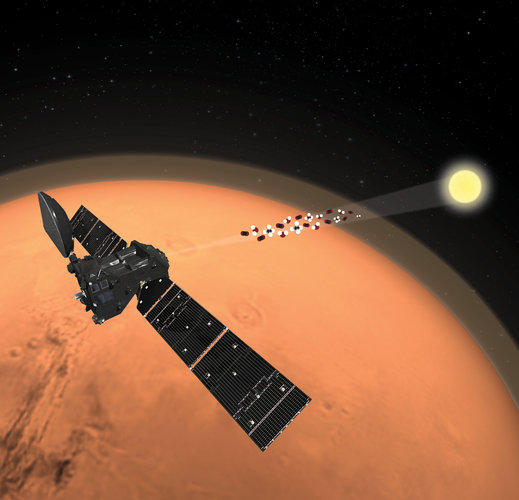
Speed is not the only benefit of the plasma conversion technique. It uses just 10% of the energy of the MOXIE electrolysis experiment and can be started up almost instantaneously, making it compatible with fluctuating solar energy on Mars.
"Plasma conversion of Mars' atmosphere offers an interesting alternative to electrolysis, as conditions on the Red Planet are naturally well suited to it – considering, for example, the atmospheric composition and low pressure," adds ESA engineer Brigitte Lamaze, who oversaw the University of Lisbon research. "This makes it a strategic asset for ESA, and interesting to explore to facilitate our survival in space."
First production of nitrogen oxides
"The creation of nitrogen oxides from a simulated martian atmosphere is a world first in these two projects," explains Leopold Summerer, head of ESA’s Advanced Concepts and Studies Office. “It demonstrates how the funding of exploratory, blue skies research by ESA Discovery can innovate completely new processes, as well as accelerate existing ones.”
For the very first time, researchers demonstrated the possibility of ‘fixing’ molecular nitrogen (N2) into compounds containing nitrogen and oxygen that form the basis of artificial fertiliser. Fixation is any process that causes relatively unreactive N2 to combine chemically with other elements to form more reactive nitrogen compounds.
Soil-based Martian farms will require nitrogen-based fertiliser. In particular, they are likely to benefit from solid forms of fertiliser that could be created by combining nitrogen oxides with astronaut urine to form urea nitrate. Interestingly, urea nitrate is also a powerful explosive which could be used for excavation and seismology studies.



